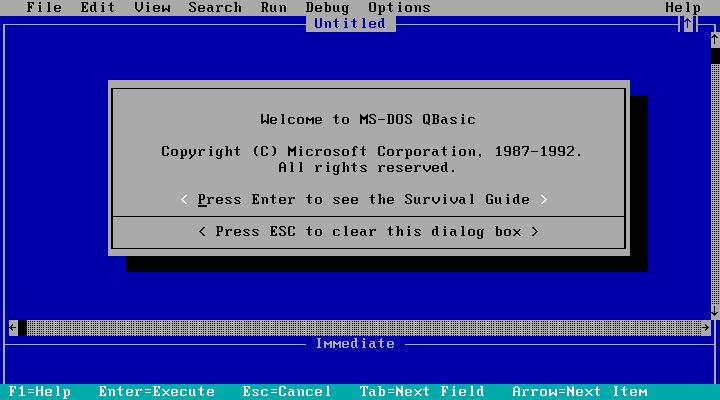QBasic, a short form of Quick Beginners All purpose Symbolic Instruction Code, is an integrated development environment (IDE) and interpreter for a variety of BASIC programming languages which are based on QuickBASIC. Code entered into the IDE is compiled to an intermediate representation (IR), and this IR is immediately interpreted on demand within the IDE. It can run under nearly all versions of DOS and 32-bit versions of Windows, or through emulation via DOSBox/DOSEMU on Linux, FreeBSD, and 64-bit versions of Windows. (QBasic is a DOS program and requires DOS or a DOS emulator. Windows XP comes with an emulator called DOS Virtual Machine, subsequent versions of Windows require an emulator such as DosBox.) For its time, QBasic provided a state-of-the-art IDE, including a debugger with features such as on-the-fly expression evaluation and code modification. It supports various inbuilt functions.
Like QuickBASIC, but unlike earlier versions of Microsoft BASIC, QBasic is a structured programming language, supporting constructs such as subroutines. Line numbers, a concept often associated with BASIC, are supported for compatibility, but are not considered good form, having been replaced by descriptive line labels. QBasic has limited support for user-defined data types (structures), and several primitive types used to contain strings of text or numeric data.
Some of the advantages of QBasic are:
- QBASIC is very easy-to-learn programming language.
- QBASIC is free to download and it comes pre-installed in windows 95/98.
- Suitable for mathematical and business application
- Best for beginners to understand the programming language.
- It checks for errors in syntax automatically.
- It is simple and easy to debug.
And some of the disadvantages of QBasic are:
- QBASIC is not a well-structured programming language.
- It is mostly used in education or training.
- QBasic cannot generate executable codes.
- It is not a professional language.

0 Comments